Sendible insights Marketing Personas 101: A Guide to Creating Them for Your Business
How well do you know your audience?
If your answer is anything less than “so incredibly well”, you might be missing out on reaching even more clients. Knowing exactly who you’re marketing to can mean the difference between resonating with the people that need your services and turning them off completely.
This is where your trusty marketing personas come into play.
Also known as buyer personas, they give you a deep understanding of your clients’ needs and attributes so you can create marketing messages that hit the spot time and time again.
Getting to know your clients or customers in this way helps you find what platforms they’re hanging out on, use the right words to entice them, and build out campaigns they love.
What is a marketing persona?
Marketing personas are made using real-life customer research to create profiles of specific, individual customers that represent a key audience segment.
They are essentially a profile of one person that reflects a key part of your audience.
There’s a high chance you’ll need to create more than one marketing persona to align with the different types of client you have.
For example, if you have a lot of one-man-band e-commerce brands on your client list but also want to target enterprise-level businesses, you’ll need to create a marketing persona for each.
There is no magic number that you should follow.
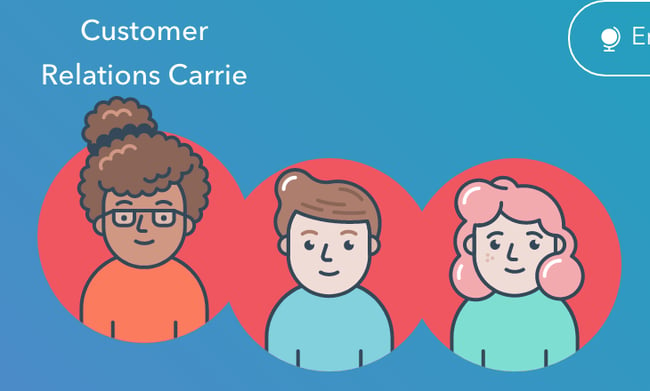
>>Pro Tip>> You can create personas on Hubspot with their “Make My Persona” generator.
A very niche agency might have just one or two different types of marketing persona, while a larger organisation that caters to lots of different needs and offers lots of different services might have up to six or seven. However, it’s been noted that 3-4 personas typically account for 90% of a company’s sales.
In this article, we’ll show you how to determine which segments should be made into marketing personas. This is valuable knowledge because creating marketing personas for the type of people you want to reach as well as the audience segments you’re already reaching can be really effective.
Doing this will help you expand your audience and attract different types of clients that will benefit from your offering.
The last thing to note is that a marketing persona digs deeper than simple demographic information and incorporates psychographic information. This includes big-picture elements like the struggles, challenges, goals, dreams, and fears or your persona, rather than simply outlining their age and location.
Why are marketing personas important?
If you don’t have a deep understanding of who you’re talking to, how will you know which social channels they’re most active on? How will you know what content to create for them? How will you know what they want and need from you?
Personas in marketing can help you really hone your messaging and provide a more personalised experience for your audience.
In fact, personalisation is a key marketing trend that consumers crave more of.
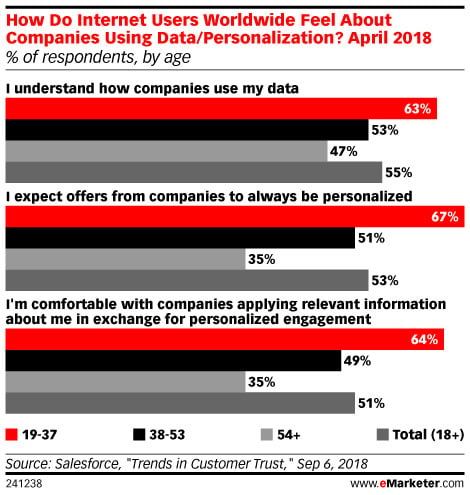
One survey found that over half of consumers expect offers from a brand to be personalised, while 57% of consumers are actively willing to share their personal data in exchange for personalised messaging from brands.
This is near-on impossible to do without knowing who your audience are and what they want from you.
Help your audience self-select
The ultimate goal of a marketing persona is to help you focus your messaging so that it resonates with the right people. They basically encourage your audience to feel like you’re speaking directly to them and help them self-select - you want them to think “this was made for me!”.
Stop assuming
By gathering information about who your audience is and what they want, you can make sure all your marketing efforts are geared towards your clients’ needs.
This means you can stop assuming.
A lot of brands assume they know what their customers want, but often the reality doesn’t match up.
This is precisely what happens when a brand believes they have a great product on their hands but are confused as to why nobody is buying it. Chances are, it is a great product, they’re just marketing it in the wrong way because they don’t know how best to resonate with their preferred customer base - or, at least, they’ve wrongly assumed they know how to resonate with their people.
Create deeper connections
Building strong client relationships is key if you want to create a loyal list that signs up for your services year after year. Marketing personas - and, therefore, having a deep understanding of your clients - strengthens your relationship with your audience. This is because you are able to build trust quickly when your audience feels like you really “get them”.
In fact, research has shown that 79% of customers are more loyal to a brand that understands them.
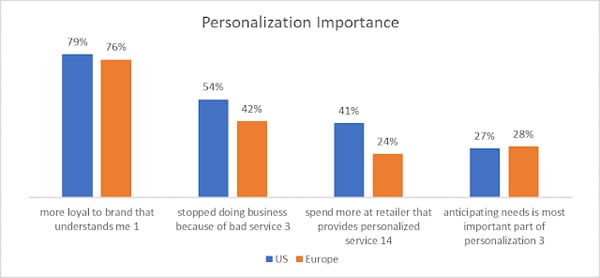
Save time and create successful campaigns
Imagine not knowing who your audience is.
Your marketing campaigns would be hit and miss, and you’d probably waste a lot of time trialling elements that don’t resonate at all.
When you have a deep understanding of who you want to reach, you can cut back the time spent experimenting and create more successful campaigns.
Think about it:
If you know that your ideal client is a 35-year-old businesswoman who has no kids, loves to travel three times a year, and dreams of talking on stage at conferences around the world, you’re in a much better position to craft narratives that resonate with her than if you had a vague idea of targeting working women in their 30s.
Personas keep your marketing activities focused and help you eliminate efforts that don’t align with customer goals.
How to create a marketing persona
Step 1: Understand your key audience segments
First things first, what specific audience segments are already using your services? Are there any commonalities between your buyers?
To figure this out, dig into your sales analytics, check out the demographic information in Google Analytics, and see who interacts with your social media posts the most. Is there a pattern between these people? Do they work a similar job role? Are they based in the same location? Do they tend to be around a certain age?
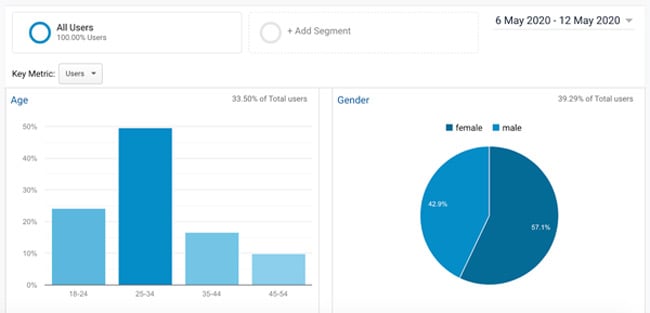
If you’ve got any deeper demographic insights here, make a note of those too. For example, if you have a qualifying box in your newsletter signup form that asks how big the company is they work for, note that down.
Once you’ve collected data from all relevant sources, you’ll start to see trends emerging. Jot down up to three segments that are standing out above the rest.
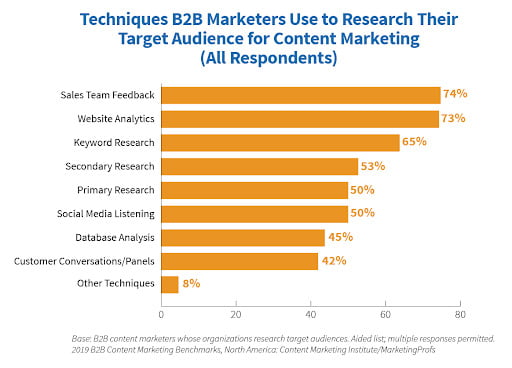
Step 2: First-hand customer research
The absolute best way to find out your customers’ wants and needs is to ask them and get the information straight from the horse’s mouth.
You can do this by setting up a series of interviews with a handful of customers in each segment to find the answers to questions like:
- What are your biggest challenges in business and life?
- Where do you want to be with your business in one year and what do you need to get there?
- What kind of solution were you looking for when you found us?
- What problem(s) did you need solving?
- What does your day-to-day activity look like and how do our services fit into that?
- What were you most excited about when you signed the contract with us?
- Were there any marketing materials you saw from us that particularly resonated with you?
The best part about this kind of first-hand research is you can get an idea of the words and phrases your customers use.
For example, if you notice that a lot of them say that their biggest challenge is “finding amazing staff to hire”, you can use that exact phrasing in your marketing materials to resonate with other, similar businesses.
Step 3: Additional second-hand research
If you aren’t able to set up interviews with your best customers - or you’re just starting out so you don’t have any - there are other ways you can research your audience.
These are also good practices to carry out to cement your personas and add another qualifying layer on top of the interviews.
- Send out a survey - reach out your audience on social media or via your email list and send them a survey that has questions which dig into their challenges, goals, fears, and dreams.
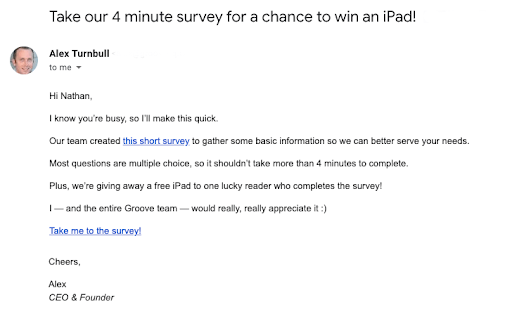
- Research your competitors - see who their customers are and determine if you can use this information to fuel your own personas. Pay close attention to any case studies they have on their site and testimonials to get the information you need.
- Carry out social listening - monitor mentions of your business or agency and gain a real-time insight into what people are saying about it online. Look closely for information about your services, like what past customers love or things that aren’t working for them (you can also mine customer feedback and reviews for this part as well).
At this point, you’ll have a good idea of who your personas are. However, you might want to carry out extra research to fill in the gaps.
For example, if you’ve identified one of your personas as Founders of small e-commerce businesses but can’t figure out what their struggles and pain points are, run a simple Google search to see if there’s any existing content that can help you out.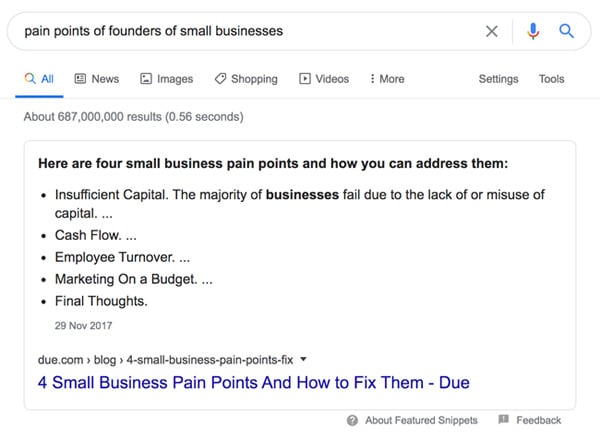
Step 4: Personalise your persona
Now it’s time to bring everything together.
Use the information you’ve gathered from your interviews, surveys, competitor research and social listening, to draft up two or three key personas.
Group like-minded members of your audience into separate buckets and pinpoint their different needs. Once you’ve got a clear set of personas emerging, you can turn them into “real” people.
Start by giving each persona a name to make them more real. You can even add a photo so you can picture your persona when creating marketing material for them.
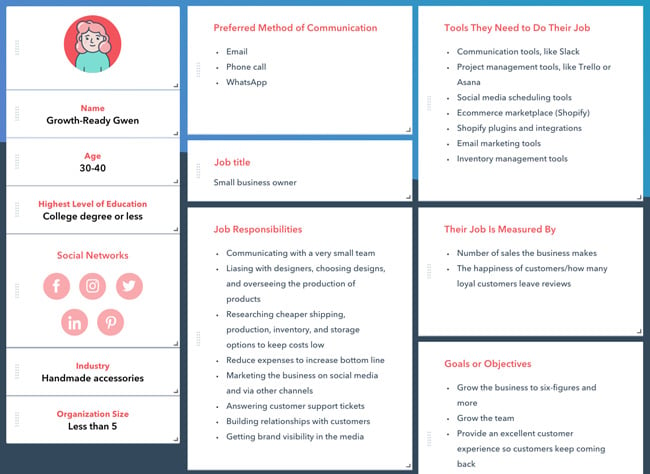
As well as outlining their challenges, problems, dreams, and goals, you can also suggest content and marketing touchpoints they might benefit from during different stages of the buying cycle. This will help you populate your marketing strategy and content calendar with content you know is going to be useful for these personas.
For example, say you have two distinct personas - Sally, a 35-year-old businesswoman, no kids, and loves to travel, and Maria, a budget-conscious mother of three with a mid-level management job.
It’s likely that Sally and Maria will need different information from you to move to the next stage of the buying cycle. Cost might not be a huge issue for Sally, whereas it is for Maria. In which case, Maria will need more marketing content centred around the cost of the product you’re selling to tackle her objections.
How to keep your marketing personas relevant
Marketing personas aren’t (and shouldn’t be) static; instead, they are fluid concepts that change with your clients’ needs.
COVID-19 has completely changed customer needs, and what used to matter to consumers no longer does. As a result, you’ll need to switch up your marketing strategy to align with their new pain points and struggles.
It’s not just major, worldwide crises that call for a rework of your personas. It’s worth checking in every few months to determine if the marketing personas you’ve created are still relevant and update them where necessary. You can always run through steps one to three again to make sure.
Other times you might want to update your personas to include:
- When you launch a new product or service
- When your marketing isn’t getting the results you want
- When you want to target a new audience segment
It’s important that you’re flexible and understand your or your clients' audience well enough to know what they need in different circumstances - particularly during uncertain times.
How to use personas in your marketing
Once you’ve got your marketing personas neatly tied up with a name and a picture, you can start using them to fuel your marketing activities.
They can help you make informed decisions at every stage of a campaign:
- Think about each persona as a real person - what do they need the most and how can you help them?
- Use your personas to determine which platforms your audience is hanging out on - is it Twitter? Instagram? LinkedIn?
- Use your personas to determine what content each audience segment needs at each stage of the buying cycle - for example, what information does Mid-Level Maria need to make a decision? Does she need case studies, a demo, or a tutorial?
- Use your personas to hone your copy. Use the same words that they use to resonate deeper with them, and touch on their pain points in your marketing copy to build trust and show that you really “get them”
Your marketing personas are a vital part of your marketing strategy. Without them, you’ll essentially be throwing spaghetti at a wall and seeing what sticks.
Once you have a deep understanding of the people you want to reach, you can craft messages that speak directly to them, which will build trust and deeper connections, while getting better campaign results for your or your client’s business.
Text copied!

